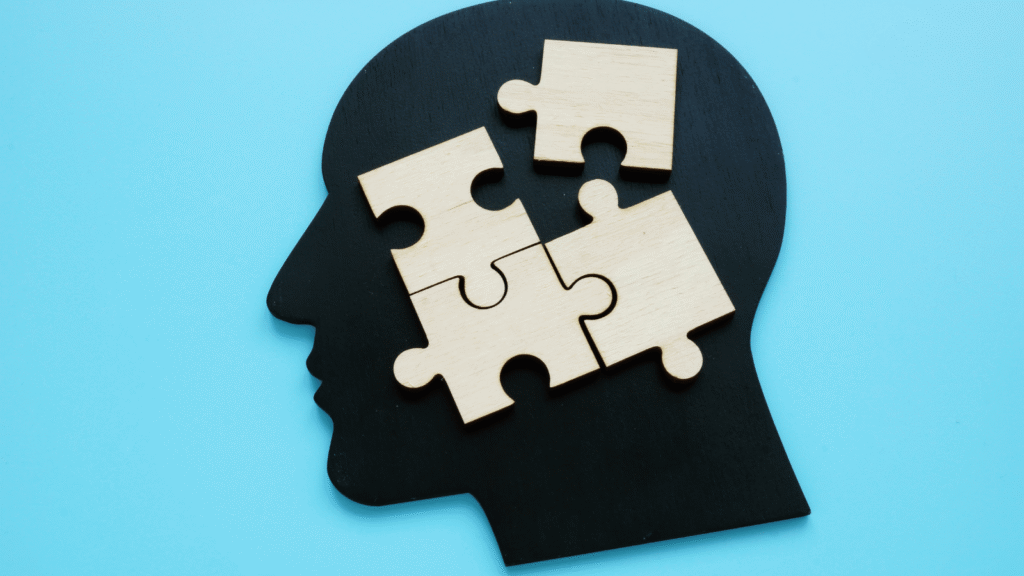A productivity mindset is more than just a way of working—it’s a way of thinking about your time, energy, and focus so that you can consistently make meaningful progress on the things that truly matter. It’s not about cramming more into your day but about working with purpose and clarity so your efforts actually move you forward. When you master this mindset, you stop feeling like you’re constantly playing catch-up and start feeling like you’re in control of your goals, your habits, and your life. The beauty of it is that it’s not reserved for a select few—it’s a skill you can learn, refine, and make your own.
- Understanding the Core of a Productivity Mindset
- The Role of Clarity in High Productivity
- Eliminating Distractions and Protecting Focus
- Harnessing the Power of Habits for Long-Term Success
- The Connection Between Mindset and Energy Management
- Overcoming Procrastination Through Strategic Action
- Leveraging Tools and Technology Wisely
- The Role of Continuous Learning in Staying Productive
- Final Thoughts
- FAQs
Understanding the Core of a Productivity Mindset
A productivity mindset is essentially about thinking and acting with intention. It’s knowing that your time, focus, and energy are valuable resources—and treating them as such. Instead of approaching work reactively, you make conscious choices that align with your priorities and values. This means asking yourself, “Will this action bring me closer to my goals?” before committing your attention to it.
It’s also about shifting from a “to-do list” mentality to an “impact list” mentality. Not all tasks are equal—some move the needle far more than others. By identifying and focusing on high-impact actions, you maximize results while minimizing wasted effort.
Key traits of a productivity mindset include:
- Clarity of purpose – knowing exactly why you’re doing what you’re doing.
- Proactive decision-making – acting based on priorities, not just urgency.
- Resilience – staying focused even when challenges or distractions arise.
- Consistency – showing up and doing the work regularly, not just when you feel motivated.
When you internalize this way of thinking, productivity stops being a constant struggle and becomes a natural part of how you operate. Over time, you’ll notice that your choices feel lighter, your progress is steady, and your stress levels drop because you’re no longer pulled in a hundred different directions.

The Role of Clarity in High Productivity
Clarity is what turns effort into progress. Without it, you might work hard all day and still feel like you’ve achieved nothing meaningful. It’s about knowing exactly what matters, what doesn’t, and how each action connects to your bigger goals.
When you have clarity, you make faster decisions, waste less energy, and avoid getting caught up in low-value tasks. You start your day with purpose instead of guessing what needs your attention. This prevents the mental fatigue that comes from constant re-prioritizing.
Here are a few ways clarity fuels high productivity:
- Defines priorities so you focus on what will create the biggest results
- Eliminates guesswork, reducing time wasted on indecision
- Keeps motivation high because you can see the direct link between your actions and your goals
- Simplifies planning, making it easier to map out your day or week
- Prevents overwhelm by breaking large objectives into clear, manageable steps
You can strengthen clarity by writing down your top three priorities each morning, reviewing them during the day, and checking them off in the evening. This simple loop helps keep your focus on what truly moves the needle, instead of letting your attention scatter.

Eliminating Distractions and Protecting Focus
Distractions don’t just waste time—they break your flow and drain your mental energy. Every interruption, no matter how small, forces your brain to shift gears and then work harder to get back into the task at hand. This constant switching creates mental fatigue and can make even simple tasks feel harder than they should.
Protecting your focus starts with identifying your biggest sources of distraction. For some, it’s endless notifications; for others, it’s a cluttered workspace or noisy surroundings. Once you know your triggers, you can set up guardrails to keep them at bay.
Some effective strategies include:
- Turning off non-essential notifications on your phone and computer
- Using “Do Not Disturb” or focus modes during deep work sessions
- Keeping only essential items on your desk to reduce visual clutter
- Wearing noise-cancelling headphones to block background sounds
- Setting specific times to check email or messages instead of responding instantly
Another way to strengthen focus is to work in time blocks, such as the Pomodoro Technique—25 minutes of focused work followed by a short break. This not only trains your brain to sustain attention but also gives you regular recovery periods so you don’t burn out.
And if your mind tends to wander even without outside distractions, a quick mindfulness reset can help bring you back. That’s exactly why I created The Quiet Mind Toolkit—to give you practical, bite-sized exercises that calm mental chatter so you can fully immerse yourself in what you’re doing.

Harnessing the Power of Habits for Long-Term Success
Habits are the quiet engines of productivity. They work in the background, shaping our actions without constant decision-making. The more we rely on helpful habits, the less we have to force ourselves into action—and that’s what makes productivity feel sustainable rather than exhausting. Good habits create structure, reduce mental friction, and make progress automatic.
One reason habits are so powerful is that they build compounding results. A single positive action might feel small on its own, but repeated daily, it can transform your life over time. For example, spending just ten minutes each morning planning your day can prevent hours of wasted time later.
Habits also protect your focus by reducing decision fatigue. Instead of debating whether to work out, write, or review your tasks, you simply follow your established routine. This is why so many high achievers swear by their morning and evening rituals—they remove uncertainty and set a predictable flow to the day.
Some productivity-boosting habits worth building include:
- Starting the day with a clear plan and top priorities
- Reviewing progress at the end of each day
- Scheduling deep work blocks for focused tasks
- Using a consistent wind-down routine to improve sleep
- Practicing gratitude to boost motivation and perspective
If you struggle with sticking to habits, start small. Pick one habit and commit to it daily until it feels natural before adding another. Over time, these small, consistent actions will add up to long-term success. For a step-by-step system on creating habits that actually stick, my book Small Habits, Big Energy walks you through the process in a practical, no-pressure way.

The Connection Between Mindset and Energy Management
Your mindset directly influences how you manage and protect your energy. When you adopt a productivity mindset, you stop seeing energy as something that simply “runs out” and start treating it as a resource you can renew and optimize. This shift helps you make choices that keep you performing at your best without slipping into burnout.
Energy comes in different forms—physical, mental, and emotional—and each one affects how productive you can be. If you’re mentally drained, even simple tasks can feel overwhelming. If you’re physically sluggish, your focus suffers. A strong mindset helps you recognize these dips and respond with actions that restore balance.
Simple energy-boosting strategies include:
- Prioritizing 7–8 hours of quality sleep each night
- Eating balanced meals that stabilize blood sugar and mood
- Staying hydrated to support cognitive performance
- Incorporating movement breaks to refresh the body and mind
- Using mindfulness or breathing exercises to reset mental clarity
It’s also important to schedule demanding tasks for the times when your natural energy is highest and save lighter, routine tasks for when your energy dips. By aligning your workflow with your body’s natural rhythms, you maximize efficiency without feeling overworked.
If managing your energy feels challenging, especially when stress and overthinking take over, my book The Quiet Mind Toolkit can help you quiet mental clutter and regain focus so you can work at your best all day.

Overcoming Procrastination Through Strategic Action
Procrastination often hides beneath the surface of busyness. We convince ourselves we’re working when, in reality, we’re avoiding the tasks that truly matter. It’s not always about laziness—it can stem from fear of failure, perfectionism, or simply feeling overwhelmed by where to start. Recognizing the root cause is the first step to breaking its grip.
One of the most effective ways to tackle procrastination is to lower the barrier to action. Instead of focusing on completing the entire task, commit to just beginning. This creates momentum, which often leads to finishing more than you expected. Even the smallest action can interrupt the cycle of delay.
Here are some quick, strategic actions to beat procrastination:
- Apply the two-minute rule: If it can be done in two minutes or less, do it immediately.
- Break big projects into bite-sized steps so they feel less intimidating.
- Set a five-minute timer and promise yourself to work only until it rings—you’ll often keep going.
- Use accountability by telling someone your deadline or progress.
- Remove friction by preparing tools, documents, or your workspace ahead of time.
Procrastination loses its power when you make starting easier than avoiding. Every time you take quick, decisive action, you train your brain to associate progress with reward rather than dread. If procrastination is a constant struggle, my book The Procrastination Reset gives you proven, actionable strategies to replace hesitation with consistent forward motion.

Leveraging Tools and Technology Wisely
Tools and technology can either accelerate your productivity or quietly drain it. The difference lies in how intentionally you use them. Too many apps can scatter your attention, while the right ones—used consistently—can streamline your workflow and keep everything organized. The key is to choose tools that solve real problems rather than chasing every new trend.
When selecting productivity tools, focus on three main areas: task management, time management, and information capture. A good task manager keeps your to-do list clear and prioritized. Time management tools help you track how you’re spending your hours, so you can make adjustments where needed. Information capture tools ensure no important ideas or details slip through the cracks.
Examples of high-impact tools include:
- Task Management: Trello, Asana, or ClickUp for organizing and prioritizing work
- Time Tracking: Toggl or RescueTime for monitoring productivity patterns
- Note Taking: Notion or Evernote for storing ideas, research, and project details
- Focus Support: Forest or Freedom for blocking distractions during deep work sessions
It’s also important to audit your tools regularly. Ask yourself if each one is truly adding value or if it’s just another digital distraction. Streamlining your toolkit helps you work more efficiently and keeps your focus where it belongs—on the tasks that move you closer to your goals.
The Role of Continuous Learning in Staying Productive
Continuous learning keeps your productivity mindset sharp and adaptable. When you stop learning, your systems risk becoming outdated, and your work can start to feel stagnant. The most productive people are lifelong learners—they’re always looking for better ways to work, think, and adapt to new challenges.
Learning doesn’t always mean formal education. It can be as simple as reading a new book on personal development, experimenting with a new productivity app, or trying out a time management method you’ve never used before. The key is to stay curious and open-minded, so you can discover tools and strategies that match your evolving goals.
Some practical ways to integrate learning into your productivity routine include:
- Reading 10–15 minutes a day on a topic that challenges your thinking
- Listening to podcasts or audiobooks during commutes or walks
- Attending workshops, webinars, or online courses
- Seeking mentorship or peer feedback to refine your methods
- Reflecting on what’s working and adjusting accordingly
Even small doses of new knowledge can lead to big breakthroughs in how you approach your work. When you consistently feed your mind fresh ideas, you’re not just keeping up—you’re staying ahead.
Final Thoughts
The productivity mindset isn’t about squeezing more hours out of the day—it’s about using the hours you have in a way that supports your biggest goals and values. By focusing on clarity, protecting your attention, building supportive habits, managing your energy, and staying adaptable, you set yourself up for sustainable success. It’s not an overnight transformation, but with consistent effort, you’ll notice yourself working smarter, feeling less stressed, and making real progress where it matters most.




